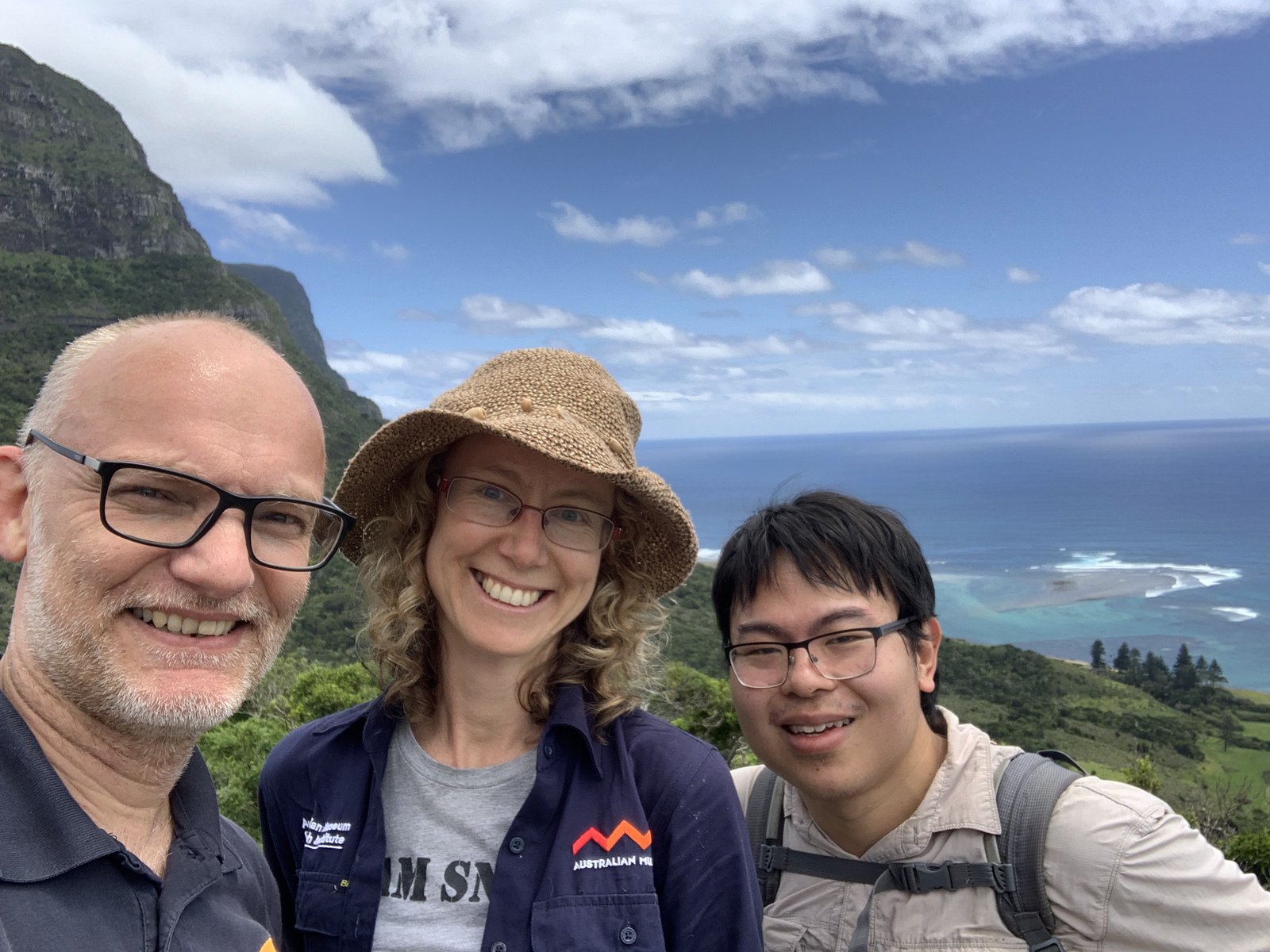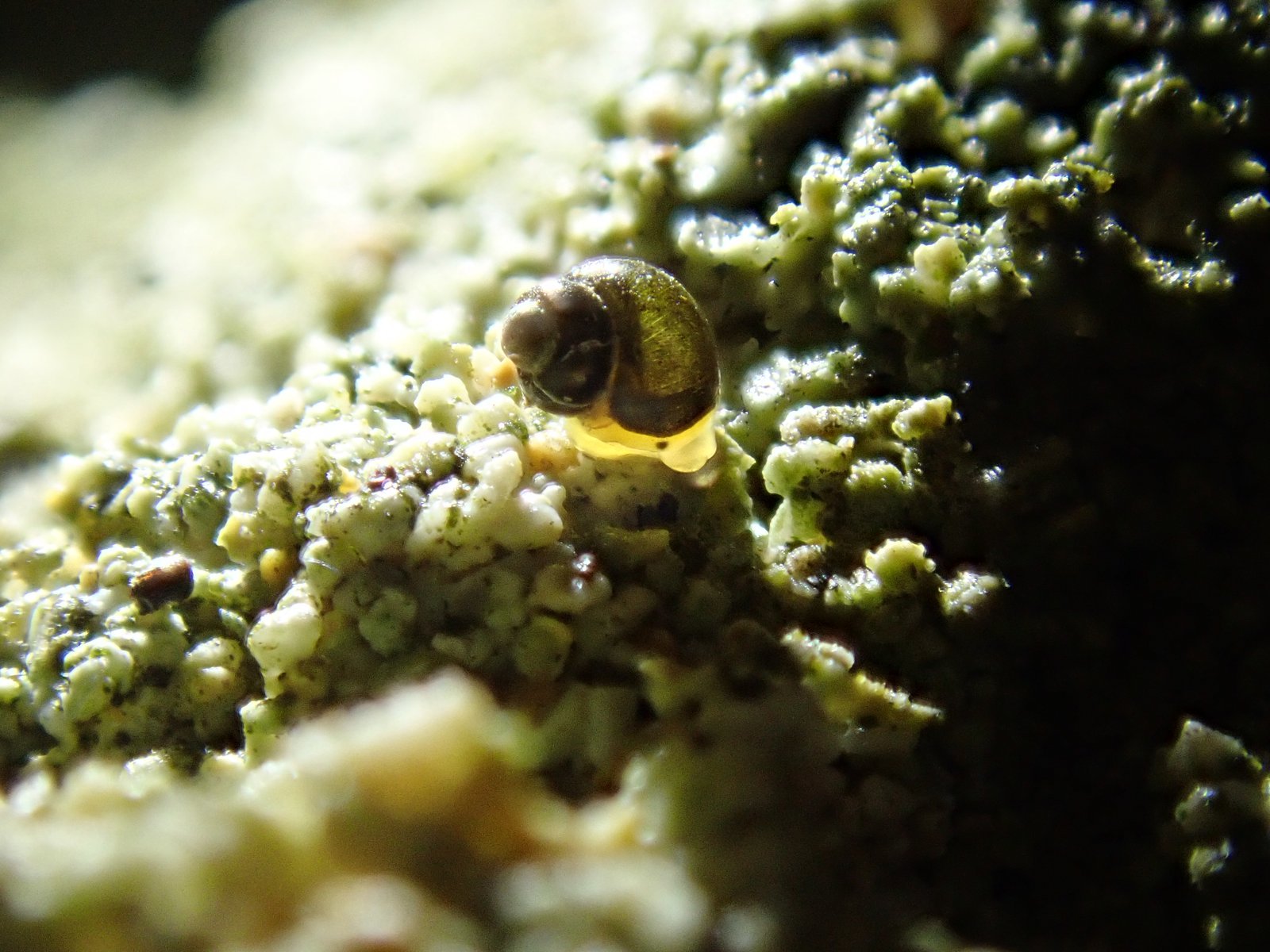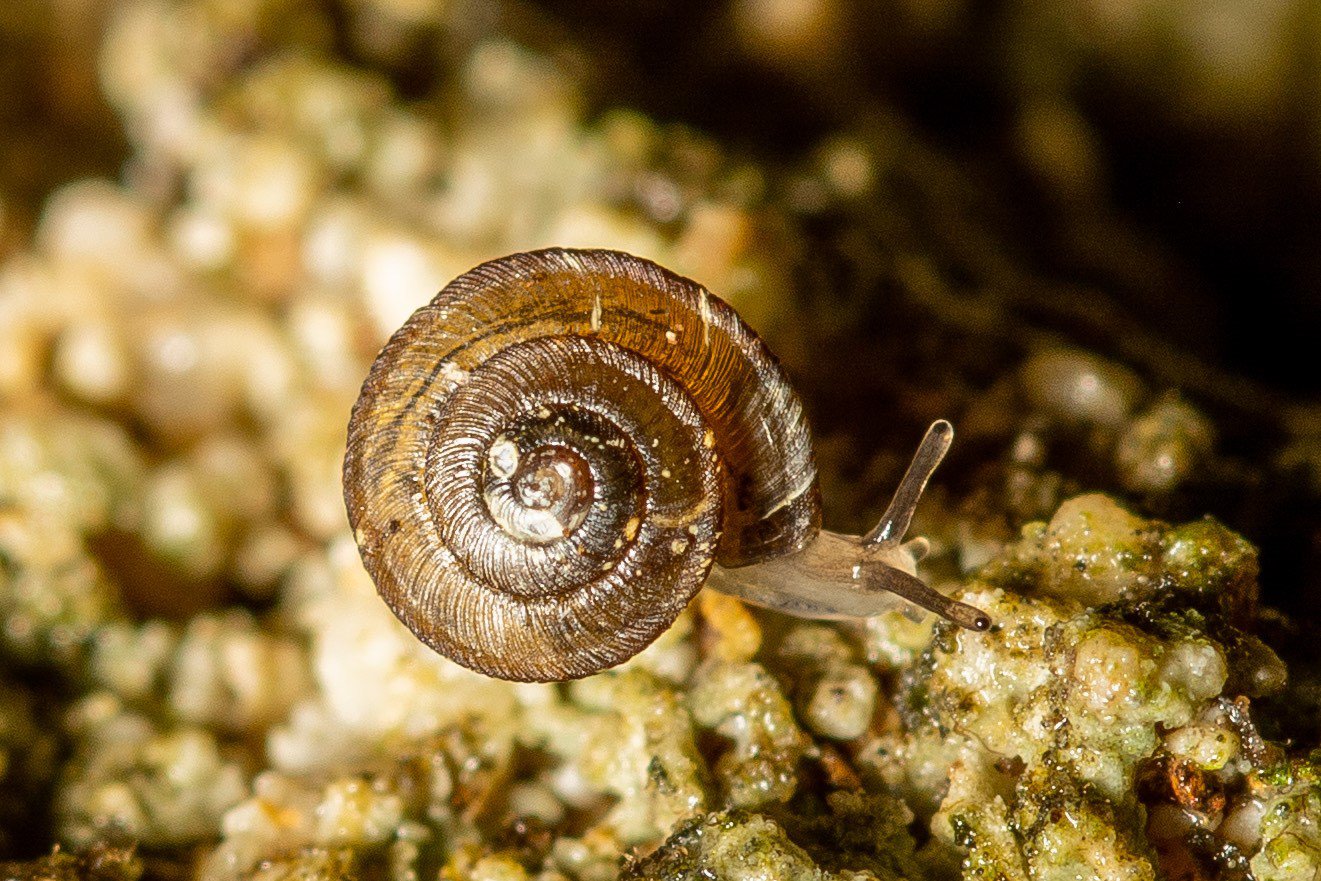Lord Howe Island’s ‘magnificent’ snail, thought to be extinct, seen for first time in 20 years

A recent snail survey on Lord Howe Island was punctuated with shouts of excitement, as we found not one, not two, but three rarely seen species.
Those who have followed our land snail blogs will know that Dr Frank Köhler and I have been studying Critically Endangered snails on Lord Howe Island since 2016. The Lord Howe Island land snail fauna is incredibly rich and diverse, with around 70 endemic species. The snails are a critical part of ecosystem functioning, acting as a food source for other animals and also playing a role in the decomposition of leaf litter. However, threats such as rodent predation have had a heavy toll, particularly on the larger snails – five of which are listed as threatened by both NSW and Australian governments. We have managed to find some individuals of four of the five endangered species during the past five years, but one species has always eluded us: the magnificent helicarionid land snail, Gudeoconcha sophiae magnifica.
This species really lives up to its name. With a shell of nearly 4 cm in diameter, it is the largest helicarionid in Australia and what’s more, its body displays a beautiful blend of varying shades of brown and black. This species is only known from the upper slopes and summit of Mt Gower, a towering basalt mountain of 875 metres in height that is covered in cloud rainforest. Gudeoconcha sophiae magnifica experienced a population collapse after the accidental introduction of rats in 1918. In 2002, when I surveyed Lord Howe Island for land snails as a PhD student, I found just two living specimens. However, sadly, targeted searches since 2002 have not recovered another individual. As one of the last people to see this species alive, and as the current expert on this particular family of land snails, I have a particular passion for this beautiful species and have searched long and hard – in vain! I feared the worst.
Since rodents were eradicated on Lord Howe Island in 2019, our surveys have revealed increased abundances of some other large snails, and so we have maintained our hopes and continued the search for the Magnificent Helicarionid Land Snail. In order to thoroughly survey the Mt Gower summit, each year we climb for three hours to the summit with heavy packs on our backs and camp there for three days while searching. This year, I had the bad luck to fracture my thumb just before the trip and so was forced to stay at the research station, sorting leaf litter and biting my nails, while waiting for my fellow Team Snail members to complete their surveys and deliver the verdict for this year. And… they found it! New Team Snail member Junn Foon, on his first trip to Lord Howe Island, found a single living specimen. We are absolutely thrilled to know that this species has survived the rodents and lives on, after 19 years without a sign.

While this was truly the high point of the trip (and I’m still cursing the poor timing of my fractured thumb!), the excitement didn’t end there. Despite years of surveys, there are still several species recorded from Lord Howe Island that we have never found. When we invited Junn to join us, he was determined to find one in particular: the Lord Howe microturban (Monterissa gowerensis), one of the tiniest species on the island (with a shell of around 2 mm), an obligate rock-dweller found only on wet rock faces – and last recorded alive in 1913. He searched every wet rock face we came across with true dedication, and on day four, there were more cries of joy as he discovered the first living specimens in over 100 years. By the end of the trip we had located three separate populations.

But wait, there’s more! On the very last site of the last day, perched at the base of yet another sheer rock face, I spotted a tiny snail crawling across the wet rocks and my heart skipped a beat. It was the distinctive Deliciola charis, one of the rarest and most poorly known species on Lord Howe Island, previously known only from a single, slightly crushed shell collected prior to 1945 and up until now considered extinct. This was a wonderful way to end the trip. The photos included here are the first ever live images of Deliciola charis and Monterissa gowerensis.

To end on a note of caution: this year’s survey shows an increasing number of invasive, predatory flatworms, species that are known to prey on soft-bodied invertebrates such as snails and earthworms. We are working with a flatworm specialist and other invertebrate taxonomists to establish how much of a threat this may be to the island’s biodiversity and to identify potential protective measures. Meanwhile, while remaining watchful for emerging threats, we are delighted to document and celebrate the signs of recovery among the larger land snails in particular, which have suffered such a huge impact from rodent predation over the past century.
Acknowledgements:
Documenting the Land Snails of Lord Howe Island and Norfolk Island was funded by the Australian Biological Resources Study, the Graeme Wood Foundation and the Department of Planning, Industry and the Environment.
A Field guide to the Land Snails of Lord Howe Island was funded by a grant from the Australian Museum Foundation.
This article was originally published by the Australian Museum and reproduced with permission.






